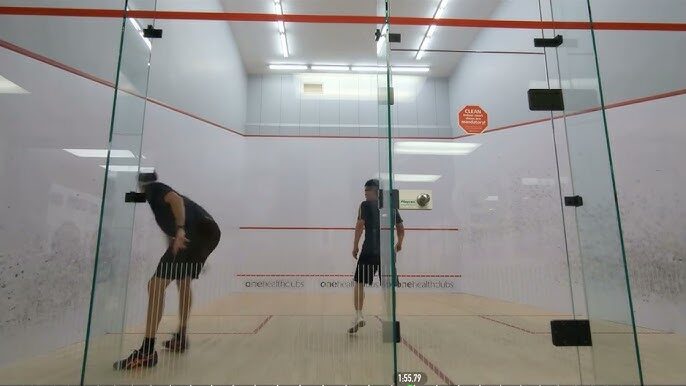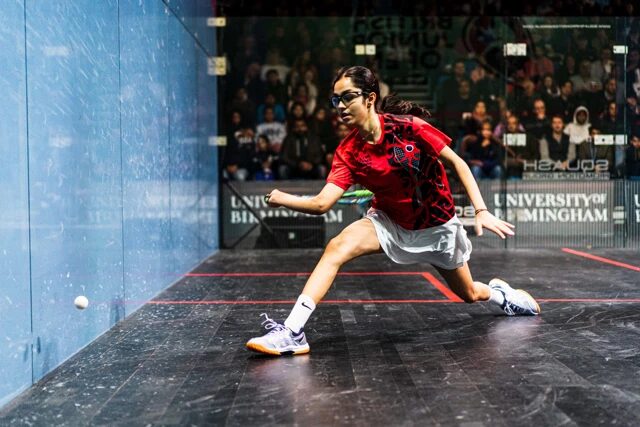Squash is one of the most fast-paced and intense racquet sports, requiring players to have not only excellent physical skills but also sharp mental strategies. For top squash players, success on the court doesn’t come down solely to power or speed but rather to a well-thought-out game plan that includes court positioning, shot selection, mental resilience, and fitness. In this blog post, we’ll explore the best strategies used by top squash players and how you can incorporate them into your own game.
1. Understanding the Basics of Squash Strategy
Before diving into advanced techniques, it’s essential to understand the fundamental aspects of squash strategy. At its core, squash is a battle of positioning, shot variety, and control of the pace of the game.
Key Elements of Squash Strategy:
- Positioning: Staying in the right spots on the court is crucial. Top players constantly return to the T-position, which allows them to cover all areas efficiently.
- Shot Selection: Knowing when to attack and when to defend is key to maintaining a strategic advantage.
- Consistency: Consistently placing the ball in difficult-to-reach areas of the court forces errors from your opponent.
By mastering these basic elements, you’ll have the foundation to apply advanced strategies.
2. Effective Court Positioning and Movement
Court positioning is perhaps the most critical aspect of squash strategy. Top players dominate by controlling the center of the court — the T-position. This allows them to respond quickly to any shot, cutting down on reaction time.
Court Positioning Tips:
- Control the T: The player who controls the T can dictate the flow of the match. Move quickly and efficiently between the center and the back corners.
- Footwork and Anticipation: Excellent players don’t just react to the ball but anticipate where it will go. Improving your footwork will give you a significant edge.
- Stay Low and Balanced: Top players remain low and balanced to respond to shots quickly while conserving energy.
Incorporating these tips into your practice will enhance your movement on the court, making you a more formidable opponent.
3. The Power of Varying Shot Selection
Top squash players know the value of keeping their opponents guessing. The ability to vary your shot selection is a critical strategy in breaking your opponent’s rhythm.
Shot Selection Techniques:
- Mix up the Shots: Vary between drives, drops, lobs, and volleys. Mixing up the speed and depth of your shots makes it harder for your opponent to predict your next move.
- Deception: Use deception in your shots to trick your opponent. A fake drop shot followed by a powerful drive can catch your opponent off guard.
- Pace Control: Alter the pace of the rally to disrupt your opponent’s timing. Fast exchanges followed by slower, softer shots can cause confusion.
Mastering shot variation will make your game unpredictable and difficult to defend against.
4. The Tactical Use of the Front and Back Corners
While much of the focus in squash is on the T-position, the front and back corners are equally important. Top players excel at using both to their advantage.
Strategies for Corner Play:
- Back Corners: To effectively attack the back corners, players need powerful drives and good positioning. Aim to hit deep and close to the side walls to limit your opponent’s recovery time.
- Front Corners: The front corners are key to forcing mistakes. Use soft drop shots or precise lobs to pull your opponent out of position and create openings for finishing shots.
Understanding how to control both the front and back corners will help you dictate the pace of the match.
5. Dominating the T-Position: The Key to Control
As mentioned earlier, the T-position is the heart of squash strategy. Top players dominate by quickly returning to the T after each shot, ensuring they can respond to almost any ball with minimal movement.
Tips for T-Domination:
- Quick Recovery: After hitting a shot, always aim to return to the T-position as quickly as possible.
- Maintain a Strong Stance: When at the T, keep your feet wide for balance and remain low to respond to fast shots.
- Control the Flow: Once at the T, you can dictate the game. Control your opponent’s shots by being prepared to intercept or return them quickly.
By mastering the T-position, you’ll ensure you’re always in the best spot to launch your next attack.
6. Psychological Strategies: Outthinking Your Opponent
Elite squash players often outperform their opponents mentally as much as they do physically. A large part of squash strategy revolves around the mental game.
Mental Strategies:
- Stay Calm Under Pressure: Top players like Nicol David and Mohamed El Shorbagy remain calm during critical moments, using controlled breathing and positive self-talk.
- Intimidation and Confidence: The mental aspect of squash can often be a game-changer. Players who exude confidence tend to dominate psychologically.
- Patience and Focus: Knowing when to play aggressively and when to wait for the right moment is a key trait of mentally strong players.
Incorporating mental toughness into your squash strategy can give you a competitive edge, especially during tight games.
7. Fitness and Stamina: A Key Factor in Winning Squash Matches
While strategy is important, the physical demands of squash cannot be overlooked. Top players maintain high levels of fitness to sustain fast-paced rallies and explosive movements.
Fitness Tips for Squash:
- Endurance Training: Squash requires endurance for long rallies. Regular cardio and interval training will boost your stamina.
- Strength Training: A strong core and legs are essential for quick movements, lunges, and powerful shots.
- Agility Drills: Practice short sprints and lateral movements to improve your agility on the court.
Building endurance and strength will allow you to implement your strategies for longer periods without tiring.
8. Lessons from the Pros: Top Squash Players and Their Signature Strategies
Examining the strategies used by legendary players can provide valuable insights.
Example Strategies from the Pros:
- Jahangir Khan: Known for his unmatched fitness and ability to control the center of the court, Khan’s strategy relied on relentless pressure and exceptional stamina.
- Ramy Ashour: His deceptive shots and ability to change the pace of the game were central to his success.
- Laura Massaro: A master of positioning and mental toughness, Massaro’s strategic placement of shots was key to her victories.
By studying these players, you can learn specific strategies that will help elevate your own game.
9. How to Incorporate These Strategies into Your Own Game
It’s time to take what you’ve learned and apply it to your squash game. Here’s how you can incorporate these strategies into your practice sessions:
Practical Tips:
- Practice Your Footwork: Incorporate footwork drills to improve your movement on the court.
- Use a Variety of Shots in Practice: Try mixing your shots during practice to improve your decision-making.
- Mental Training: Work on staying focused during matches and practicing mental exercises to build resilience.
Start by focusing on one or two strategies at a time, and as you improve, gradually incorporate more advanced tactics.
Incorporating the best strategies used by top squash players can take your game to the next level. By mastering court positioning, varying your shot selection, staying mentally tough, and improving your fitness, you’ll be on your way to becoming a more strategic and competitive player. Remember, consistent practice and applying these techniques will lead to improvement over time.
Do you have any squash strategies that have helped you improve your game? Share your tips in the comments below! And if you found this post helpful, subscribe to our blog for more squash advice and updates.




